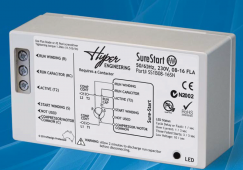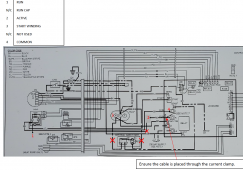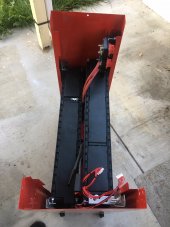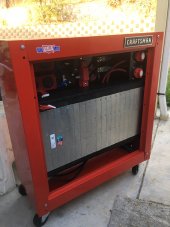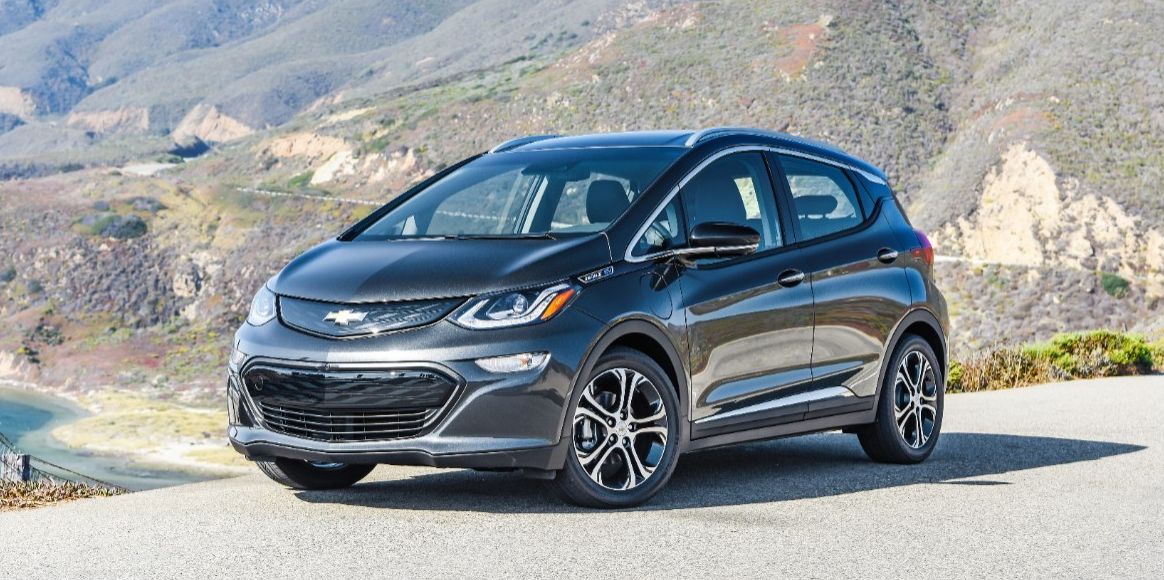There has been a bit of talk about AC coupling with Enphase micros and the XW-Pro, so I figured I would poke around a bit more with what happened when my grid did fail last week. Here are the screen shots of the whole day from both Schneider and Enphase.
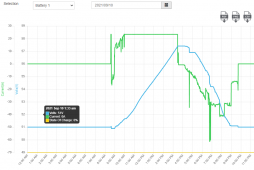

Showing the whole day, it is a bit hard to see what really happened, so here is a zoom in of the entire time the power was out, about 90 minutes from 8:38 am to 10:03 am

At 8:35, I had just started the XW-Pro charging. You can see the charge current goes from 0 to 23.38 amps. But just 3 minutes later, at 8:38, the current goes to -15.49 amps, discharging the battery. After 5 minutes a few of the iQ7's start to come back on, but at 8:44 am, each panel is making less than 20 watts. So even with 5 panels running, I am discharging. I go around and turn off a few devices to reduce my load a bit, but at 8:50 my refrigerator cycles back on. You can see the discharge current was ramping up towards zero, but then stepped down a bit again. This is about when I sent the command to the Enphase system to change the grid profile, and all 16 panels started producing power again. By 8:58, I was charging at 7 amps, and ramping up as the sun was rising.
At this point, just after 9 am, I had to leave, I was already running late for work, so the rest is all unattended operation.
It looks like the refrigerator cycled on again about 9:13 am. The solar power is still ramping up, then I see a tiny dip at 9:20. I would say it was something turning on, so I ignored that at first. The charge current keeps ramping up with the rising sun, an all looks great. Then another dip at 9:29 am. This one is a little deeper, still only 1 minute long, no big deal. Then again at 9:39 and 9:49, and 9:59. Hmmm.
I looked in the logs on the Enphase system, and sure enough, at perfect 10 minute spaced intervals, 5 of the iQ7's showed a grid frequency too high instability, but it cleared in one minute. The charge current on the graph never quite hits my setting, but it is obviously rising close to my max current, so I am quite sure, that was the XW-Pro shifting the frequency to limit the current, and it did work just fine. It does look like the grid came back on at 10:03 am as that is where the battery charge current went dead flat at my 23.35 amp setting. As the solar continued to ramp up, the extra power was then being exported out to the grid. The battery voltage goes back to a very linear climb as it charges at the fixed current.
It would have been nice if I didn't have to work and I could have put my frequency counter and scope on the system, but the data log does tell it pretty well. I also should have dialed the max charge current up. I have it set low when I am on grid as I have until 4 pm to get the battery charged. I am not in any hurry, and the extra power does credit my bill. I end up exporting about 40% of what I did before having the battery bank. But off grid, I hate to just throw away the power like that. And if clouds moved in later, it would be nice to just grab all the solar power I can until the battery is full. I think the newer Schneider firmware does have a few extra settings for on vs off grid. I am still on 1.08 and it only has the one current setting. Even just my old battery bank could easily handle the full 140 amps the XW-Pro could push out to the batteries, and now with my doubled battery bank, it is no sweat at all.



